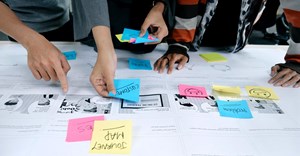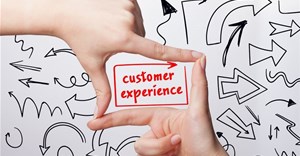
Subscribe & Follow
Jobs
- Senior HubSpot CRM and Data Specialist Cape Town
- Team Leader - Customer Service Johannesburg
- Digital Designer Cape Town
- Client Services - Account Executive Johannesburg
Great customer experiences can be manufactured

Far too many businesses however assume that great customer experiences happen organically as a direct result of ground-up changes to operations. While that may sometimes be true, it isn’t necessarily always the case.
In fact, great customer experiences can be manufactured. Doing so starts with customer communication.
Understanding ‘manufactured experiences’
Before exploring how organisations can manufacture experiences, it’s important to understand what the term means.
A manufactured experience is a complete, ground-up redesign of an engagement that is perfectly tailored to meet the customers’ exact needs.Manufactured experiences incorporate the functional purpose of the engagement in a way that brings awareness of the potential break-out points, such as alternative channels or calls-to-action. Additionally, they drive mutually beneficial behaviour, with the result being improved customer service and a reduced cost to serve.
It’s important to note that the manufacturing of experiences doesn’t make the interaction any less powerful. In fact, it increases the potency and effectiveness of the engagement.
Manufacturing experiences
When it comes to manufactured experiences, it’s important to start with a specific customer journey and define exactly what each phase within that journey must achieve. This definition may take the form of a “single-minded job to get done” i.e. one single overarching statement of what we would like the customer to achieve in this phase or outline a more refined set of targeted customer outcomes i.e. a set of more specific customer outcomes that we would like the customer to achieve within this phase.
From there, you need to map all the existing customer touchpoints, identify the purpose of the touchpoint, and determine whether it achieves the stated purpose. The answers to these questions should be drawn from customer data where possible and followed up with a dose of gut instinct.
For each touchpoint, answer the following questions:
- What is the purpose of this communication?
- What is the targeted outcome for the customer?
- Does it fulfil the purpose?
Having understood your default position, it’s important to completely reimagine the customer experience based on what would motivate the appropriate form of engagement. You’re in a position to design the ideal experience from the ground-up. This may require a complete re-imagining of the existing experience, and a broader understanding of how each touchpoint impacts the rest of the customer journey.
It’s important to note that re-imagining an experience does not always require a "rip-and-replace" of the existing experience, it may just require a repackaging or extension of the current assets.
Try not to get bogged down with operational or technical restraints at this stage. Think from the customer's point of view only. Depending on the information available, this may even require a co-design session with your customers and stakeholders.
A frictionless, manufactured experience
When you manufacture an experience, there are some basic characteristics that must be present, because we know these characteristics drive specific customer behaviour:
- Personalisation - this means not only addressing the customer by name, but digging deeper and customising the experience based on the customer’s life stage, journey stage, preferences or previous engagement.
- Convenience - the key to driving engagement is to provide simple, obvious and convenient calls to action which align with the customer’s life. It’s preferable to embed the CTAs into the experience, rather than forcing a break out to another channel.
- Consistency - building trust is a direct result of providing a consistent experience. Meeting expectations and avoiding a fractured experience across the customer journey allows the customer to build a connection to the brand, which lowers the barriers for engagement.
With these as basic principles, the goal is to take the customer on a journey from the start (receipt of the communication) all the way to the end (achieving the targeted outcomes).
Overcoming organisational challenges
Of course, achieving the above and manufacturing great experiences can be challenging within the confines of an organisation. Most organisations have a complex set of systems and processes. Too often, this complexity dominates most of the experience design decisions.
System architects often shoe-horn the creative process by limiting the experience options to the available technology, rather than enabling the ideal customer experience, and sourcing the technology to support that.
But, it is possible to overcome these challenges. Try to keep the customer and the targeted outcomes at the core of every design decision, and then use technology to deliver this experience.
The rewards for doing so are simply too great to ignore.


















